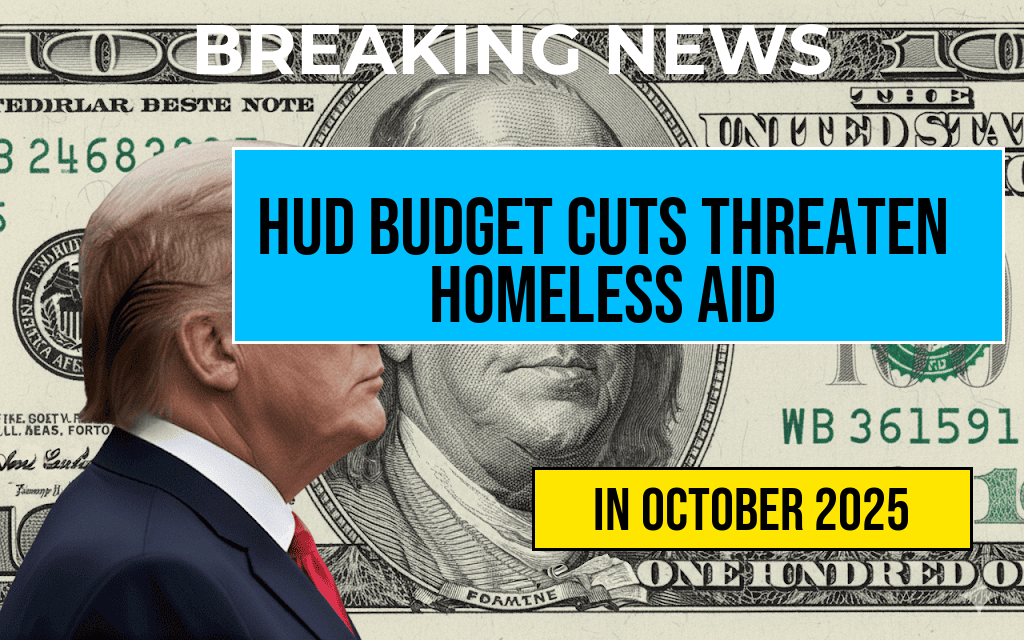The Department of Housing and Urban Development (HUD) faces a significant reduction in funding, with its budget slashed from approximately $3.3 billion to $1.1 billion. This dramatic cut threatens vital homelessness programs nationwide, leaving more than $170,000 individuals and families vulnerable to displacement and instability. The reduction marks one of the steepest decreases in recent years, raising concerns among advocates, local agencies, and policymakers about the long-term impact on efforts to combat homelessness and provide affordable housing. As federal resources dwindle, communities are forced to reassess their priorities and explore alternative funding sources, risking further setbacks in addressing a persistent crisis that affects millions across the country. Experts warn that the diminished budget could undermine ongoing initiatives and lead to increased homelessness rates if supplementary support does not materialize quickly.
Impact of Budget Cuts on Homelessness Initiatives
Funding Shortfall and Program Reductions
The reduction from $3.3 billion to $1.1 billion represents a nearly two-thirds decrease in federal housing assistance allocations. This decline directly impacts programs such as the Continuum of Care (CoC) and Emergency Solutions Grants (ESG), which serve as primary sources of funding for local homeless services. Many agencies rely heavily on HUD grants to operate shelter programs, transitional housing, and supportive services. With less financial support, some organizations have had to curtail services, delay new initiatives, or even shut down entirely.
Vulnerable Populations at Increased Risk
| Population Group | Number Affected | Potential Impact |
|---|---|---|
| Unsheltered Homeless | Approximately 170,000 | Increased exposure to weather, health risks, and safety concerns |
| Families with Children | Thousands | Higher risk of eviction, unstable housing, and disrupted education |
| Veterans | Estimated hundreds | Reduced access to supportive services and permanent housing options |
The $170,000 figure refers to the estimated number of individuals directly affected by the funding cuts, many of whom face heightened vulnerabilities without adequate shelter or support systems. The risk extends beyond immediate shelter needs, impacting mental health, employment stability, and overall community safety.
Local and State Responses
Community-Level Adjustments
In response to the federal budget reduction, local governments and nonprofit organizations are exploring innovative strategies to bridge the funding gap. Some have increased collaborations with private donors, while others are reallocating existing resources to sustain critical programs. However, these efforts are often insufficient to meet the rising demand for services, especially in densely populated urban centers where homelessness has become an entrenched issue.
Policy Debates and Legislative Actions
Lawmakers are divided over the appropriate level of federal investment in housing initiatives. Advocates argue that the budget cut undermines years of progress in reducing homelessness, while opponents cite broader fiscal concerns. Several bills are under consideration to restore or supplement HUD funding, but political gridlock has hindered swift action. Stakeholders emphasize that without immediate intervention, the long-term costs—both human and economic—will escalate.
Economic and Social Ramifications
Cost of Rising Homelessness
Research indicates that homelessness imposes substantial costs on public systems, including healthcare, law enforcement, and social services. According to the National Alliance to End Homelessness, the average annual cost per homeless individual can reach upwards of $35,000. As funding diminishes, the number of individuals experiencing chronic homelessness could increase, intensifying these financial burdens and straining city and state budgets.
Broader Community Impacts
Communities facing a surge in homelessness often experience declines in property values, increased public health concerns, and safety issues. The social fabric of neighborhoods can be strained as residents and local officials grapple with the immediate challenges of providing adequate shelter and support. Experts warn that neglecting preventative measures now could lead to more costly interventions later.
Looking Ahead: Challenges and Opportunities
Potential for Alternative Funding
Some cities are exploring innovative financing models, including public-private partnerships and social impact bonds, to sustain homelessness programs amid federal reductions. Additionally, there is growing interest in leveraging federal grants from other agencies and expanding state-level initiatives. However, these measures require substantial planning and community buy-in, which may delay immediate relief.
Need for Policy Reforms
Addressing the root causes of homelessness—such as affordable housing shortages, mental health issues, and economic disparities—remains central to long-term solutions. Experts advocate for comprehensive policy reforms that prioritize preventative strategies and affordable housing development, rather than solely reactive measures. As federal funding diminishes, the importance of local and state leadership becomes increasingly critical in shaping effective responses.
For more detailed information on homelessness and federal housing policies, visit Wikipedia’s homelessness page and Forbes article on private capital in homelessness prevention.
Frequently Asked Questions
What is the main concern regarding the recent HUD budget cut?
The primary concern is that the reduction in the HUD budget from $3.3 billion to $1.1 billion significantly threatens homelessness funding programs, leaving approximately $170,000 vulnerable and at risk of being eliminated or reduced.
How will the budget cut affect homelessness assistance programs?
The budget cut may lead to decreased funding for homelessness assistance programs, potentially resulting in fewer resources for housing support, shelters, and support services for vulnerable populations.
Who is most impacted by these funding reductions?
Vulnerable populations, including homeless individuals and families at risk, will be most affected by the funding cuts, as they rely heavily on HUD programs for housing assistance and support services.
What are the potential consequences of decreased homelessness funding?
Potential consequences include an increase in homelessness rates, reduced access to emergency shelters, and diminished support services for those in need, which could exacerbate existing social issues.
Are there any efforts to oppose or mitigate the budget cuts?
Some advocacy groups and community organizations are actively protesting the budget reductions and lobbying for increased funding to ensure continued support for homelessness programs.






